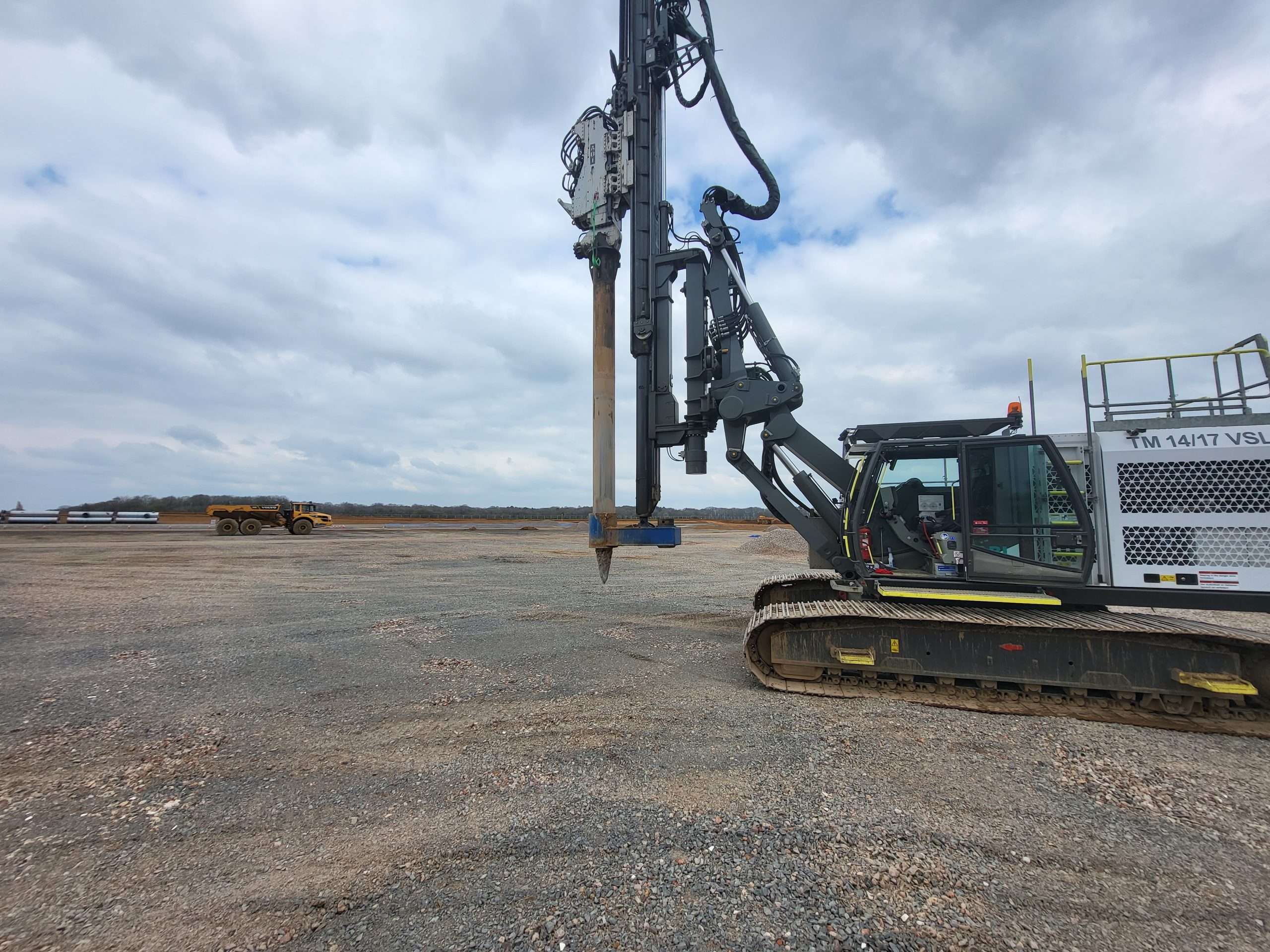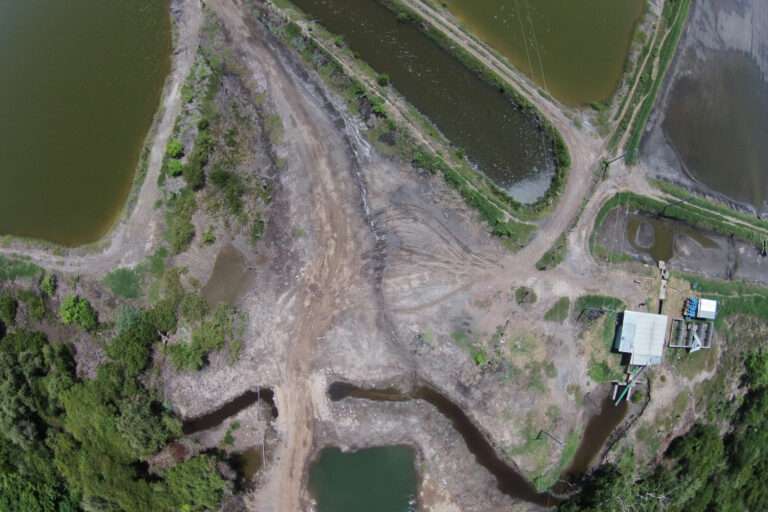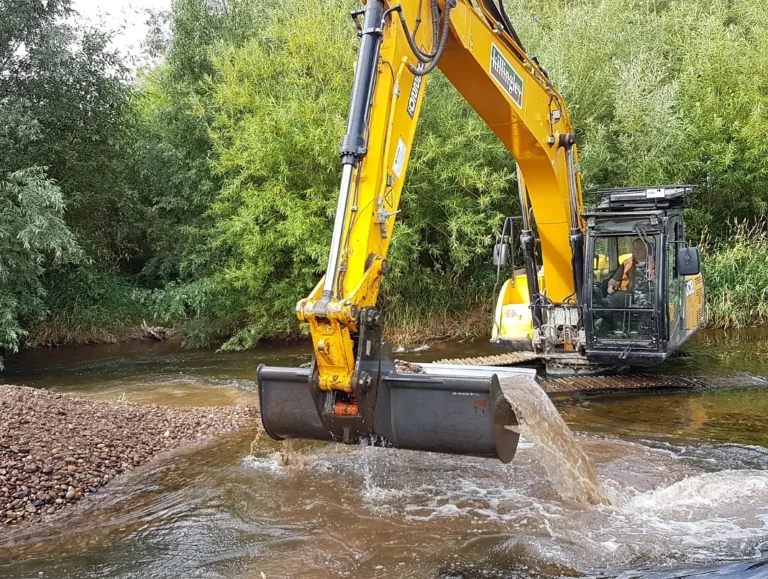Ground Improvement Techniques: From Stone Columns to Vibro Compaction
Stand on a muddy field in winter and you’ll feel it straight away — ground that squelches, shifts, and doesn’t exactly inspire confidence. Try putting a road or building on it and the problems multiply: uneven settlement, cracking, even outright collapse.
That’s where ground improvement techniques come in.
They’re the toolbox engineers use to turn weak, inconsistent, or waterlogged soils into something strong enough to build on. It’s not glamorous, but without it, much of the UK’s infrastructure — roads, housing estates, airports — simply wouldn’t stand up.
What Is Ground Improvement?
In simple terms, it’s any method that strengthens, stiffens, or drains the ground without completely replacing it. Instead of digging out soft soils and carting them away (which is costly, slow, and bad for the environment), we improve what’s already there.
That might mean:
- Compacting the soil until it’s denser.
- Inserting stone columns to spread loads.
- Using high-pressure grout to bind loose soils.
- Replacing water in the pores with stone or cementitious material.
The point? A safer, cheaper, more sustainable foundation.
Why It Matters in the UK
Our soil is a patchwork. London Clay swells and shrinks with moisture. Peatlands in Scotland are soft and compressible. Gravel terraces along the Thames are free-draining but inconsistent. Without treatment, many sites just aren’t fit for heavy structures.
Ground improvement techniques save projects money, speed up construction, and reduce reliance on imported aggregates. They also lower carbon footprints by keeping material in place rather than carting it off to landfill.
The Main Ground Improvement Techniques
Different soils, different problems, different solutions. Here are the big hitters.
Vibro Stone Columns
Also known as vibro replacement, this technique involves inserting stone columns into weak soils. A vibrating probe is driven into the ground, displacing soil. Crushed stone is fed in around the probe, compacted in layers, forming a column that reinforces the soil.
Best for: Soft clays, silts, or loose sands.
Benefits:
- Increases load-bearing capacity.
- Reduces settlement.
- Improves drainage.
If you’ve ever stood near one of these rigs, you’ll know the thrum it sends through the ground. It looks chaotic, but the outcome is ordered: neat grids of stone columns quietly carrying the load of entire housing developments.
Vibro Compaction
Different from stone columns, vibro compaction is used on granular soils — sands and gravels. Instead of adding stone, the vibrating probe rearranges particles into a denser state.
Best for: Loose, granular soils with little clay.
Benefits:
- Increases density.
- Reduces liquefaction risk in earthquakes (less of an issue in the UK, more abroad).
- Creates a uniform base for structures.
In the Thames Gateway, vibro compaction has been used on reclaimed land to make it safe for warehouses and distribution centres.
Dynamic Compaction
It’s as simple as it sounds: dropping very heavy weights from a great height onto the ground. Repeated impacts compact soils at depth.
Best for: Loose fills, reclamation sites, made ground.
Benefits:
- Treats large areas quickly.
- Effective up to 10 metres deep.
- Cost-effective where conditions suit.
If you’re within earshot, you won’t miss it. Each drop sends a thud you feel in your chest. Crude? Maybe. Effective? Definitely.
Jet Grouting
Here’s the opposite end of the spectrum. Jet grouting involves drilling into the soil and injecting cementitious grout at high pressure, creating soil–cement columns.
Best for: Silts, clays, or soils where other methods won’t work.
Benefits:
- Creates very strong treated zones.
- Can be used under existing structures.
- Forms cut-off walls for groundwater control.
It’s more expensive, but when precision is needed — think tunnels under London — jet grouting is a go-to.
Other Techniques Worth Mentioning
- Soil mixing – blending soil with cement in situ.
- Preloading and surcharging – adding weight to squeeze out water and compress soil before building.
- Geosynthetics – using geogrids or membranes to reinforce and separate soils.
- Drainage methods – wick drains to accelerate settlement of clays.
The choice depends on soil type, load requirements, site access, and cost.
Comparison Table
Here’s a side-by-side view of the main methods.
| Technique | Best For | Depth | Speed | Cost |
|---|---|---|---|---|
| Vibro stone columns | Soft clays, silts, loose sands | 3–15m | Moderate | Medium |
| Vibro compaction | Loose sands, gravels | 5–20m | Fast | Medium |
| Dynamic compaction | Loose fill, reclamation | 5–10m | Fast | Low–Medium |
| Jet grouting | Silts, clays, difficult soils | Up to 30m | Slow | High |
| Soil mixing | Silts, clays | 5–20m | Moderate | Medium–High |
Benefits of Ground Improvement
Why not just pile into the ground and forget about soil? Because ground improvement brings benefits piles can’t always match.
| Benefit | Why It Matters |
|---|---|
| Cost savings | Less need for deep foundations. Uses local soils. |
| Speed | Faster than piling in many cases. |
| Sustainability | Reduces excavation and import/export of material. |
| Performance | Improves settlement behaviour, drainage, and stiffness. |
| Versatility | Can be applied in urban, rural, or coastal projects. |
In my experience, contractors often prefer ground improvement first, piles second. It’s less intrusive, less expensive, and often all you need.
UK Case Studies
- Heathrow Airport expansions – vibro stone columns used to stabilise soft alluvial soils.
- A14 upgrade in Cambridgeshire – dynamic compaction and soil stabilisation across large areas of weak ground.
- Housing developments in Essex – vibro stone columns underpin entire estates built on clay and silt.
- Crossrail, London – jet grouting used to control groundwater during tunnelling.
These aren’t one-offs. Ground improvement is now standard practice in most major UK projects.
FAQs About Ground Improvement Techniques
Is ground improvement permanent?
Yes. Properly designed and installed, treated soils remain stable for the lifetime of the structure.
How do you know which method to use?
It comes down to ground investigation. Boreholes, trial pits, lab tests. You can’t guess — soils vary too much, sometimes within a single site.
Is it cheaper than piling?
Often, yes. But it depends on depth, loads, and soil type. For very tall buildings, piles may still be required.
Does it work in wet conditions?
Yes — many methods (like stone columns and wick drains) actively improve drainage. Others, like jet grouting, displace water with cement.
Challenges in Ground Improvement
It’s not all smooth sailing.
- Variable ground – one corner of a site may be clay, another sand.
- Noise and vibration – dynamic compaction can disturb neighbours.
- Space constraints – some rigs need room that urban sites don’t have.
- Weather – wet winters slow down soil mixing and stabilisation.
I’ve seen projects stall because trial holes showed unexpected peat layers. Suddenly vibro compaction is off the table, and jet grouting becomes the only option — with budgets ballooning. It happens.
The Role of Soil Stabilisation
It’s worth pointing out that ground improvement often overlaps with soil stabilisation. Both aim to make weak soils usable. The difference? Stabilisation typically uses additives (lime, cement), while ground improvement covers a wider suite of techniques, mechanical and chemical.
Professional ground improvement solutions combine these approaches, choosing the right method for the soil and the project.
Tangent: The Feel of Vibro Compaction
Stand near a vibro rig and you feel it in your chest — a low, pulsing vibration that runs through the ground. Oddly reassuring, once you know it’s locking sand particles together rather than shaking them apart. There’s something hypnotic about watching rigs line up in grids, systematically treating vast areas of land. It’s noisy, dusty, and strangely satisfying.
The Future of Ground Improvement
As climate change brings wetter winters and more extreme rainfall, the demand for ground improvement will only grow. Trends include:
- Hybrid methods – combining stone columns with geogrids or drains.
- Low-carbon binders – using industrial by-products instead of cement.
- Digital monitoring – sensors embedded in soils to measure settlement in real time.
- Nature-based solutions – blending hard engineering with vegetation for erosion control.
It’s an evolving field. But one constant remains: you can’t ignore the ground. Buildings, roads, and railways are only as good as the soil they stand on.
Final Thoughts
Ground improvement might not be glamorous, but it’s vital. From vibro stone columns to dynamic compaction and jet grouting, these techniques quietly underpin almost everything we build.
Without them, much of the UK’s infrastructure wouldn’t just be unstable — it wouldn’t exist.
So next time you see a site full of rigs, cranes, and dust clouds before the first concrete pour, remember: that’s not chaos. That’s the unseen work of turning bad ground into good ground. And without it, nothing else would stand.
Killingley Insights is the editorial voice of NT Killingley Ltd, drawing on decades of experience in landscaping, environmental enhancements, and civil engineering projects across the UK.








